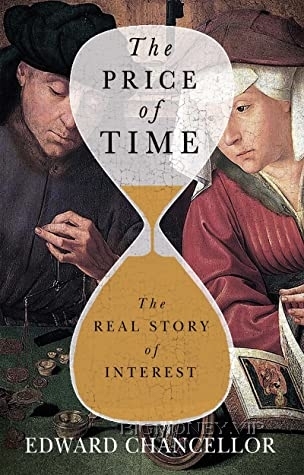
Part One
OF HISTORICAL INTEREST
1
Babylonian Birth
If wealth is placed where it bears interest it comes
back to you redoubled.
Egyptian scribe, named Any, early
first millennium BC
There was probably no other person in the whole
country who had meditated so much on the question
of interest. Margayya’s mind was full of it. Night and
day he sat and brooded over it. The more he thought
of it the more it seemed to him the greatest wonder of
creation. It combined in it the mystery of birth and
multiplication. Otherwise how could you account for
the fact that a hundred rupees in a savings bank
became one hundred and twenty in the course of
time? It was something like the ripening of corn.
Every rupee, Margayya felt, contained in it the seed
of another rupee and the seed in it another seed and
so on and on to infinity. It was something like a
firmament, endless stars and within each star an
endless firmament and within each one further
endless … It bordered on mystic perception. It gave
him the feeling of being part of an infinite existence.
R. K. Narayan, The Financial
Expert, 1952
In the beginning was the loan and the loan carried interest. Well, this may
have been the case. We don’t know for sure, but it’s now widely believed
that the earliest transactions were for credit rather than barter. We do know
that the Mesopotamians charged interest on loans before they discovered
how to put wheels on carts. Interest is much older than coined money,
which only originated in the eighth century BC. Some suggest that interest
may have originated with the payment of blood money, known as Wergild,
as compensation for murder and other injuries, with ‘interest’ as a penalty
payment over and above the value of the injury.
1
On the other hand, the
French anthropologist Marcel Mauss in The Gift (first published in 1925)
maintains that interest began with the practice of reciprocating gifts among
tribal people.fn1
Prehistoric peoples probably charged interest on loans of corn and
livestock. The association between interest and the fruit of a loan is
embedded in ancient languages. Across the ancient world the etymologies
of interest derive from the offspring of livestock. The Sumerian word for
interest, mas, signifies a kid goat (or lamb).
The ancient Egyptian
equivalent ms means to give birth.
In ancient Greek interest is tokos, a
calf. Among the several Hebrew words for interest are marbit and tarbit,
meaning to increase and multiply. The Latin for interest, foenus, connotes
fertility, and for money, pecunia, is derived from pecus, a flock. Our word
capital comes from caput, a head of cattle. These derivations, claim Sydney
Homer and Richard Sylla, imply that interest originated with
loans of seeds and of animals. These were loans for productive
purposes. The seeds yielded an increase. At harvest time the seed
could conveniently be returned with interest. Some part or all of the
animal’s progeny could be returned with the animal. We shall never
know but we can surmise that the concept of interest in its modern
sense arose from just such productive loans.
The charging of interest for the loan of farm animals continued into
modern times. In newly settled parts of the United States in the early
nineteenth century, cows and sheep were commonly sold on trust, ‘the
terms being that double the number thus transferred, is to be returned in
four or five years.’
A connection between nature’s productivity and
interest was suggested by nineteenth-century German economist Karl Arnd,
The Price of Time: The Real Story of Interest by Edward Chancellor




